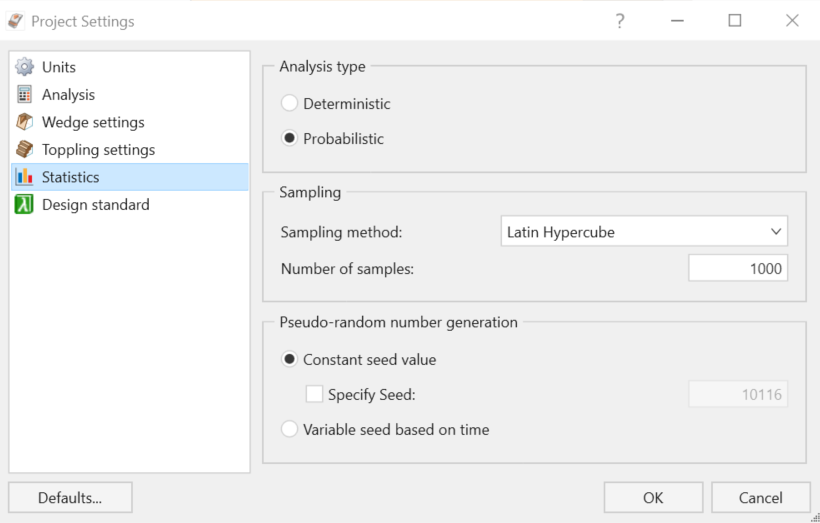Probabilistic Analysis Overview
In a Probabilistic Analysis, you can define statistical distributions for input parameters (e.g. joint orientation, shear strength, water level), to account for uncertainty in the values of input parameters. When the analysis is computed, this results in a safety factor distribution from which a probability of failure (PF) is calculated.
The general procedure for carrying out a Probabilistic Analysis with RocSlope2 is as follows.
- Select Analysis Type
Set the Analysis Type to Probabilistic in the Project Settings Statistics tab.
- Set Sampling Options
In the Statistics tab, you can choose the Sampling Method, Number of Samples, and Pseudo-Random Numbers options.
- Define Random Variables
In order to carry out a Probabilistic Analysis, you must define one or more input parameters (e.g. joint orientation, shear strength) as Random Variables, by assigning Statistical Distributions to the desired variables and entering the required statistical parameters (e.g. mean, standard deviation).
Project Settings dialog Statistics tab Any input parameter which is not assigned a Statistical Distribution is assumed to be exactly known (by the Mean value), and will not be involved in the statistical sampling process. - Slope Property Statistics
- Slope Geometry Statistics
- Joint Property Statistics
- Joint Orientation Statistics
- Point of Force Application Statistics
- Point Load Statistics
- Compute:
The Probabilistic Analysis is automatically computed once the Analysis Type is changed to Probabilistic, and again each time any of the input data is added or modified.
- View Analysis Results:
After the analysis is computed, the Results Grid will display a list of each block's result (Factor of Safety, Joint Info, etc.). Probabilistic input and output data can be plotted on Histogram, Scatter, and Cumulative Plots. Data can also be exported for further analysis and processing.
See the following topics for more information on which input parameters can be defined as Random Variables: